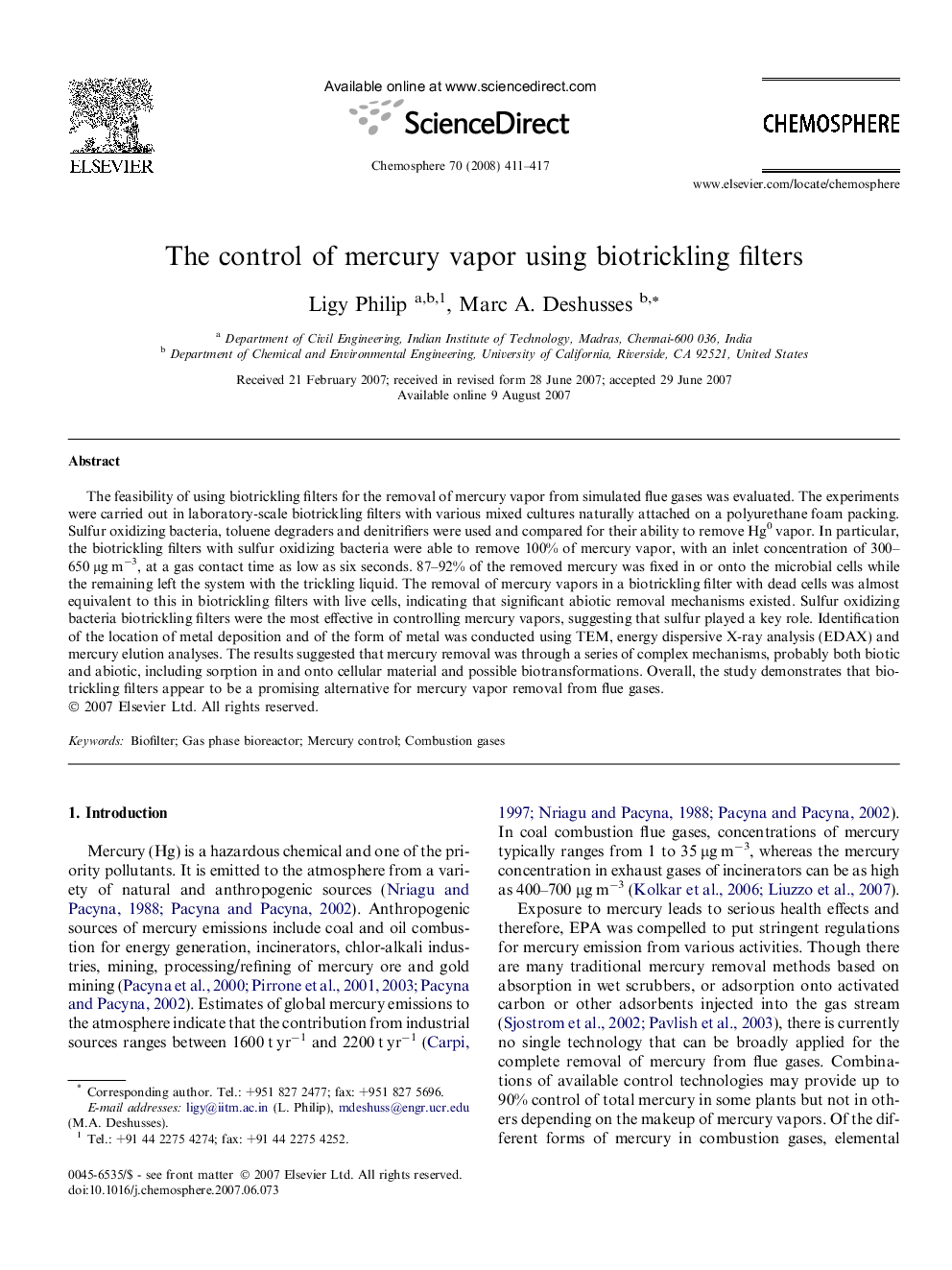| Article ID | Journal | Published Year | Pages | File Type |
|---|---|---|---|---|
| 4414318 | Chemosphere | 2008 | 7 Pages |
The feasibility of using biotrickling filters for the removal of mercury vapor from simulated flue gases was evaluated. The experiments were carried out in laboratory-scale biotrickling filters with various mixed cultures naturally attached on a polyurethane foam packing. Sulfur oxidizing bacteria, toluene degraders and denitrifiers were used and compared for their ability to remove Hg0 vapor. In particular, the biotrickling filters with sulfur oxidizing bacteria were able to remove 100% of mercury vapor, with an inlet concentration of 300–650 μg m−3, at a gas contact time as low as six seconds. 87–92% of the removed mercury was fixed in or onto the microbial cells while the remaining left the system with the trickling liquid. The removal of mercury vapors in a biotrickling filter with dead cells was almost equivalent to this in biotrickling filters with live cells, indicating that significant abiotic removal mechanisms existed. Sulfur oxidizing bacteria biotrickling filters were the most effective in controlling mercury vapors, suggesting that sulfur played a key role. Identification of the location of metal deposition and of the form of metal was conducted using TEM, energy dispersive X-ray analysis (EDAX) and mercury elution analyses. The results suggested that mercury removal was through a series of complex mechanisms, probably both biotic and abiotic, including sorption in and onto cellular material and possible biotransformations. Overall, the study demonstrates that biotrickling filters appear to be a promising alternative for mercury vapor removal from flue gases.
